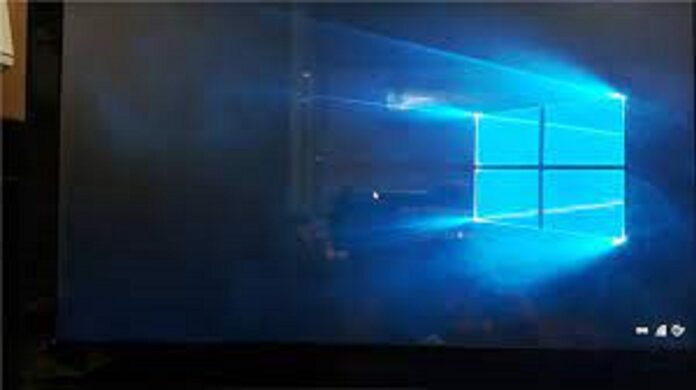When Windows presents you with a Blank Login Screen, logging in is much more difficult. On Windows, follow these steps to fix the problem.
To log in to your computer, go to the sign-in screen and enter your Windows account PIN or password. Press the Space key on a standard installation to view the login screen. But what happens if there is no login screen to be found?
Due to various factors, Windows may not display the sign-in or a black screen. Several typical causes of this problem include:
- An incorrectly set sign-in option.
- Problematic Windows updates.
- Issues with quick startup.
- System file corruption.
Follow these troubleshooting steps to restore the missing or stuck sign-in screen on Windows 11.
What Could Be Wrong With My Windows 11 Blank Login Screen?
It is possible that the stuck login screen is the result of a known issue if you are using Windows 11 build 22000.4 or later. The issue is triggered when the computer is restarted after being in Sleep or Hibernation mode. This issue might be fixed by installing a recent Windows update.
Transitory bugs, corrupted system files, or abnormal lock screen behavior can cause this issue. Follow all the steps in the sequence listed below to fix the problem.
1: Press and hold the Control, Alt, and Delete keys simultaneously.
The Ctrl + Alt + Delete keyboard shortcut can restore your login screen in Windows 11. It is a temporary fix, but it should allow you to sign in and perform further troubleshooting steps if required. Make sure your computer is on to accomplish this. Then, using your keyboard, press Ctrl + Alt + Delete. The login screen should be forced to show up as a result.
Pressing the Windows key combination Ctrl + Alt + Delete was originally intended to close any frozen programs. On Windows 11, however, the shortcut is used differently. It now automatically shows a drop-down menu that contains frequently used functions like “Change Password,” “Restart,” and “Task Manager.” The Ctrl + Alt + Delete shortcut on Windows can also be easily modified.
2: Start Your Computer in Safe Mode
The Windows operating system only loads the minimum prerequisites when in safe mode. For the administrator to determine whether or not a third-party software interferes with the system’s functionality, all such services are temporarily deactivated.
You can sign in and access your lock screen to perform more troubleshooting. Apply the troubleshooting steps below after consulting our guide on how to boot into safe mode in Windows 11.
3: Carry out any available Windows updates Blank Login Screen.
Check for updates to Windows.
Make sure to check for and install all of the latest Windows updates on your computer. As a matter of priority, hotfixes are usually applied to widespread problems. To test if the issue is resolved, check to see if any updates are still pending and install them.
Check and upgrade to Windows 11 by following these steps:
- To open Settings, press Win + I.
- A tab labeled “Windows Update” should appear in the left sidebar.
- In the top right corner, click the Check for Updates button. Windows will scan for and display any available updates.
- To download and install the software, click the button. Restart your computer after the updates have been established to apply the changes.
4: Verify and Turn Off With its interactive Secure sign-in option,
Ctrl+Alt+Del Secure Sign-In Windows allows you to add an extra layer of protection to your computer. To view the sign-in screen when enabled, the user must press the Ctrl, Alt, and Delete keys on the lock screen. This is important to prevent hackers from imitating the login screen and stealing user credentials.
It may prevent you from accessing the login screen without the keyboard shortcut, despite being a useful feature. Verify that the quality is enabled for you or any other users on the computer. If you find it unpleasant, you may disable Secure sign-in in Windows 11 by pressing Ctrl + Alt + Delete.
5: Restore the Operating System
Before installing Windows, an unregistered driver, or a new software, Windows automatically creates fresh restore points on configured systems. Therefore, if a faulty driver or update is to blame for a malfunctioning system, you can roll back to a previous state using a restore point.
Explore our guide to make and utilize a restore point on Windows 11 if you can log in to your PC using the method mentioned. If that doesn’t work, use Windows’ built-in Recovery Environment to restore a full system. Learn the steps here.
There are multiple ways to boot into the Windows Recovery Environment. Follow these steps to open the system recovery menu and perform a system restore if you cannot get past the lock screen.
- Putting your computer to sleep. If you need to force a shutdown, press and hold the Power button.
- If you want to access the recovery menu, press the F11 key repeatedly while the computer is restarting. You can boot into WinRE by pressing F2, F9, or F12. However, this varies by computer manufacturer.
- Click on Troubleshoot next to Choose an option.
- Troubleshoot the Windows Recovery Setting
- Click the Advanced settings button next.
- WinRE-Advanced-Options
- System Restore can be accessed by clicking the button.
Option advanced Restore the System.
In the System Restore window, click Next after choosing the most recent restore point.
To complete the system restore process, follow the on-screen instructions.
After this process completes, your computer will restart automatically. You should be able to view your login screen if everything goes smoothly. If not, try another restore point.
The Sixth Step: Start Up Repair Blank Login Screen
A Windows recovery utility called Startup Repair can scan your computer’s system for problems preventing it from booting normally and attempt to fix them automatically. You must boot into WinRE to access this option because it is a component of the Windows Recovery Environment. Start Repair in Windows 11 by following these steps.
- Enter the Windows Recovery Environment after booting up.
- Click on Troubleshoot next to Choose an option.
- WinRE-Advanced-Options
- Click the Advanced settings button next.
- Repair for Advanced Startup Option
- Select Startup Repair, then click OK. Your computer will now begin a startup diagnostic.
- Enter your password after choosing a user account.
- To start the Startup fix, click Continue. Please wait until it is complete, as this procedure could take some time.
Lock Screen Disabled
It’s probably a Windows bug that needs to fixed if the issue happens after you wake your computer from sleep or hibernation. To prevent the problem from happening in the future, you can temporarily disable your lock screen.
You can make your computer vulnerable to data theft and spoofing by leaving it without a lock screen. If you are the only user, you can temporarily disable the lock screen until a more permanent fix is found. Registry Editor, Group Policy Editor, and a third-party system tweaker can used to disable the lock screen in Windows 11.
How to Resolve the Windows 11 “Blank Login Screen” Problem
The Blank Login Screen problem on Windows 11 is typically due to a transient glitch. To check if the lock screen shows up, try pressing Ctrl + Alt + Delete. If it doesn’t work, you can perform a hard shutdown by pressing and holding the power button and then restarting your computer to see if the issue goes away.
You can also perform a system restore if a flawed Windows update or driver installation triggered the problem. When everything else fails, resetting your computer to factory settings may be necessary to get it working again.



